Home-my-Home |
- Стратегия игры чистки весны
- Косилка не работая? Попробуйте эту просто подсказку
- Крыть 101 черепицей: Начните с основами
- Цветастый самомоднейший банк в Токио!
- Отрежьте цены кондиционирования воздуха с этими Eco-Friendly охлаждая подсказками
- Урбанский сад на Beginners II: 14 травы, котор нужно вырасти
- Подсказки чистки весны: Более лучший путь очистить
- Как построить таблицу пикника
- De-Создайте суматоху путем дарить
| Posted: 13 May 2011 12:00 PM PDT
A spring cleaning game plan will eliminate that feeling that the cleaning is too big a job, and that progress is simplytoo big to tackle. Having a plan is the best way to go about beginning too, which is often the hardest hurdle to overcome. Spring cleaning game plan: listomania!Make lists, and make them simple and clear. When thinking about your plan, envision how a specific series of tasks can improve specific areas of your home. Spring cleaning game plans are all about winning battles, not wars. Lists will help you identify key battles, and identify areas in your home where they’re best fought. Creating lists for every room in the house For spring cleaning, it is best to go through the whole house to see which areas require the most effort and attention. Here is a general list that can be made, and then following the ideas from above, categorize and splinter into chunks for the deepest clean. Lists help you to break down the parts of the task to portions that can be completed easily in one session. An example of this would be regarding cleaning out closets. This is one task in particular that can take a long time to complete if you’re thinking about all of your closets. And a task like this can feel overwhelming when included in with the rest of the work that needs to be done.
Once you’ve identified your key zones for a spring clean, you need to consider working in each one from top to bottom. This does not necessarily mean that you have to start on the top floor of course; it just means that when working in a room it is best to clean surfaces at the highest point and work your way down. This will guarantee that if any debris or dust falls, it lands onto an area that needs to be cleaned. With each of these rooms, take a look at all the different aspects that need to be cleaned Spring cleaning game plan: think seasonalityFor many, spring cleaning is a matter of cleaning out things that they no longer need or want. Create a way to determine if something is a “keeper” or if it needs to be shown the door. But another aspect of this is not about getting rid of items, but about relocating or storing them according to seasonality. Making sense out of disorder by using seasonality as a guide is a great central strategy to a successful spring cleaning game plan. Your home will feel rejuvenated and fresh, and you’ll be able to find the clothes, tools, leisure equipment, and other important items more easily. Here’s an example of how to kickstart this kind of strategy. 1. Select items that are no longer needed or worn for the season For this task, you can label what is kept and what is tossed by how long it has been since you have actually used the item. In the case of clothing, you can sort by how many seasons it has been since the last use, or by sizes if they no longer apply to you. This is a great way to freshen up the storage area, and take a mental inventory of things that might need replacing. 2. Organizing items based on season. Box up those items – clothes, tools, outdoor equipment, etc – that are no longer needed for that particular season, and store them. Chances are, you’re not going to need winter coats, boots, snow shovels, tobaggons, and other wintry items for a while. Storage strategies are integral to any spring cleaning game plan. 3. Arrange items in order of popularity and importance. This may sound goofy, but when you arrange your clothing to be grouped by how they will be worn, it makes it easy to find things you most commonly wear, and to also put them back. The best idea is to have all the casual pieces together, and towards the front. Work clothes next, then formal. This will make the cleaning efforts last until it is time to get ready for a new season. The same thing goes for the items in your garden shed. Clear out your shed, and move all of the items you know you’re going to need for the spring and summer seasons to the front. Check to see which items are old, and perhaps need to be replaced, or serviced. Spring cleaning: reclaim your spaceWhat it comes down to is this. When you’ve done a thorough spring cleaning through a solid game plan, you get to reclaim your space once again for the rest of the year. Once again, you own your home, and the clutter and debris no longer owns you. Keeping your eye on this prize can help you get there, and a good game plan can ensure that you do. Next week, we’ll continue to explore spring cleaning, and how a simple checklist can simplify the process. A Spring Cleaning Game Plan is a post from: BuildDirect. We cover a variety of home improvement products including laminate flooring, hardwood floors, bamboo flooring, tile, decking and more. We also offer a wide range of info on interior design, housing trends, home how to, green building and living, and more. Related posts: |
| Косилка не работая? Попробуйте эту просто подсказку Posted: 13 May 2011 10:45 AM PDT Кося сезон на нас! Конечно, иногда работа ярда трудоёмка, но ничего как запах свежей травы отрезока. Если вы бедный человек уже принятый вашу травокосилку для своей первой закрутки 2011, вас как раз могли столкнуться проблема, то когда вы попробуете начать косилку. Никогда не опасайтесь--мы имеем быстрое решение! Ваша косилка может sputter или иметь затруднение начать в первый раз вы используете его после долгого периода hibernation. Ваш первый инстинкт может быть вызвать в профессионале, но держит --и держите ваш бумажник закрыно. Реальное просто говорит что виновница может быть несвежым газом который был выйден в косилку от предыдущего год. |
| Крыть 101 черепицей: Начните с основами Posted: 13 May 2011 07:50 AM PDT Ли вы новые backsplash, стена или пол, крыть черепицей часто рассматривает проект DIY. И с некоторым опытом, крыть черепицей может быть относительно легок для того чтобы получить вид. Но если вы как раз начинаете вне, то некоторые подсказки, котор нужно держать в разуме для того чтобы помочь обеспечить успех вашего проекта--и предотвратите вас от вызывать в профессионале для работы ремонта! В «колонке прагматизма» этой недели в New York Times, Bob Tedeschi детализирует его собственный опыт с учить крыть черепицей. Его самый важный совет? Начните малое с что-то как backsplash. Тот путь, вы можете ознакомить с материалами и процессом без отжать ошеломительный размер более большого проекта, как пол. Затем вверх? Уверен вы имеет правые инструменты. Tedeschi рекомендует ведра, большую губку, резиновые перчатки, cheesecloth, изумлённые взгляды безопасности, респиратор от пыли, конопатит, прокладки камня и плитки. Он также рекомендует инструменты специальности как надрезанный соколок, соколок допустимого предела, поплавок grout, острозубцы плитки и резец плитки. |
| Цветастый самомоднейший банк в Токио! Posted: 13 May 2011 02:12 AM PDT Tokyo based architects Emmanuelle Moureaux takes the seriousness out of modern banking! Where the image is usually dull uniforms and dull people here this studio have lifted the spirits of the staff and clients by re-designing a 762.53 square meter people friendly business environment with a playful touch.
This bank has been given a novel cheeky design twist! The point that Emmanuelle Moureaux Studio wanted to prove to bank hierarchy is that this type of modern design away from the usual stuffiness will attract more clients and improve the banks reputation not the other way around. This unususal colorful facade will intrigue visitors and passers by! As the first bank of this kind of decor Sagamao Shinkin Bank opened their minds and went along with the flow of the ideas and decided to go for a welcoming atmosphere with lots of freshness and believes it is actually helping workers feel happier in their working environment. Eye catching bold colors offer a fun and fresh appeal! The stunning ‘Mille Feuille’ (layer cake) facade is made with aluminum and for the paintwork they used fluro-resin paint for extra eye catching boldness, that makes a statement to the surrounding landscape. Teak decking is transferred out to the exterior to keep with the theme! These stunning bold colors against the fresh white surface create intrigue for any passers by or visitors. When dusk falls the fluro-resin based paintwork creates a subtle yet captivating warm illumination of exterior lighting. At dusk the facade is seen in a new light! Fluro-resin paintwork offers soft illumination at night fall! The interior open plan layout totally reflects the exterior with bold invigorating colors dominating the space against the clean white walls, while dandelion puff adhesive motives adorn the ceiling and appear to be floating the glass open air holes allow natural light to pour in and and help air circulation. The ceiling becomes a focal point thanks to a simple yet colorful idea! The oak wooden floor sits well against the colors and adds a touch of natural material to the playfulness of the colors, while in some areas carpeting adds a touch of extra comfort. The booths for the bank tellers and consultants have been carefully placed with space and privacy in mind. Bold furniture continues the rainbow effect! The building has 2 more levels, on the first level there are offices for senior workers and private meeting rooms and further up to the 3rd level is a changing area specially reserved for workers. Throughout each level the natural lighting continues! Opposites attract – Fun and serious work in harmony! Light pours in and air circulates thanks to the clever placed air wells! This bank plans to brighten up your day and lift your spirit! A bank with an architectural difference! A rainbow appearance and a sunny disposition taking a usual dull serious environment and transforming it into a vibrant fresh business environment making people happy, proving serious and fun can work in harmony! After the huge success of the design of this particular branch in Azusawa Itabashi – Ku in Tokyo Emmanuelle Moureaux Studio have a new commission to proceed with similar ideas for a brand new branch in Shimura.
Via: yatzer.com
|
| Отрежьте цены кондиционирования воздуха с этими Eco-Friendly охлаждая подсказками Posted: 12 May 2011 01:53 PM PDT
Running your HVAC accounts for more than half of all energy costs in your home. Like most homes in the U.S., yours probably relies on the air conditioner to keep things nice and cool during warmer parts of the year. But as summer quickly approaches, it makes sense to assess your HVAC system and learn ways to cut costs. Unfortunately, air conditioners use a great deal of energy and are expensive to operate. They also pose risks to the environment. To find out how much it costs to upgrade HVAC in your area, click here. Below are a few alternatives to enhance your current air conditioning system, as well as ways to run your A/C more effectively. The appropriateness of each method depends on the climate in your area. So, consider these ideas and consult with an expert on ways to minimize energy use, save yourself money by reducing your utility bills, and rest easy knowing you’ve done your part to help the environment. Evaporative CoolingOne way to cut energy costs this summer is through evaporative cooling, or using water to cool outdoor air that enters the house. This process, also known as swamp cooling, is utilized mostly in areas with dry climates. Evaporative cooling systems not only draw outdoor air into the home and cool it as it enters, they also push built-up heat out of homes through windows. The concept behind evaporative coolers is a departure from standard air conditioners, which recirculate the same air in a home. In contrast, evaporative coolers continually push warm, stale air out of the home and bring in fresh, cooler air. Absorption CoolingLong confined to industrial and commercial settings, absorption coolers are now available for residential use. Absorption cooling works by using heat, generated by solar-heated water or natural gas, rather than electricity as its energy source. Otherwise, absorption coolers function similarly to air conditioners. Natural VentilationUsing ventilation is, without question, the most energy efficient, cost-effective way to cool your home. With natural ventilation, opening windows and doors to capitalize on air pressure can help transport air throughout your house and provide a soothing, cooling breeze. Other forms of household ventilation use fans, which are more energy efficient than air conditioners, to circulate air and regulate temperature. Ventilating a home can be a good approach when the outdoor air is mild, but has limited application in areas with particularly hot, humid climates.
How to Run Your Air Conditioner Cost-EffectivelyIf a new cooling system doesn’t work for your budget or climate, there are some easy, inexpensive ways to reduce energy consumption and lower your utility bills while still using an air conditioner. Indeed, when used responsibly, an air conditioner can be part of an economical and eco-friendly approach to cooling a home. Consider these strategies in operating your air conditioning unit as the temperatures begin to rise.
George Rollins is a home enthusiast at FurnaceCompare.com, a site that has extensive information on brands and models of furnaces, boilers, air conditioners and heat pumps. FurnaceCompare also publishes consumer reviews and tips on choosing HVAC contractors. George has a passion for educating consumers on home improvements, as he feels that the right information can help consumers choose more wisely. |
| Урбанский сад на Beginners II: 14 травы, котор нужно вырасти Posted: 12 May 2011 12:00 PM PDT Last week, I wrote about how to consider your small space for a kitchen garden. Today, I’d like to tell you about all the herbs I think are great for cooking with, so you can start planning how to proceed. Professional chefs love fresh herbs for a reason: They're awesome! I'm no professional, but I can't get enough of fresh herbs. At $2.50 a pack in my area, a packet of herbs is a luxury item in winter. There's a recession, you know. Come spring, planting a bed of herbs is like investing in six months of exciting food. Here's a great selection of herbs to plant! Each one needs different watering, light, and space needs, so do your homework. *** BasilWhen it comes to basil, we typically use "sweet basil" and "Genovese," but there are dozens of exciting varieties. I've grown several, like "Spicy Globe" basil, a dwarf-bush variety with a peppery little leaf, and the popular Thai Basil. It's a herb used around the world to great effect. I love the October basil harvest, because I always make pesto and basil butters to freeze for use through the winter. ThymeDried thyme stands up well, so people forget how amazing it can be when it’s fresh. Don't! It's wonderful to have around and returns next season, so it's worth investing in a quality large bush. Thyme is a go-to herb for my chicken pot pie, French onion soup, and in this, my Bolognese sauce. I toss a stalk or two in, and throw the stem out at the end. Low-maintenance and hardy, it's a great beginner's plant. SageThough popular in sausages, many people don't know what else to use sage in. It's great with meats, in salads, sauces, and more. My favorite use of sage is Gnocchi in Brown Butter with Peas, Sage, and Pancetta, which is fantastic with a nice white vino and is easy to cook for entertaining, but here's a helpful link with more recipes that include sage. Like thyme, it's also worth investing for a great organic sage bush, as it'll be return for a couple years. OreganoUnlike basil, oregano is less commonly splurged on as a fresh-ingredient purchase. Its big flavor goes far but can be a bit much for some. Most commonly used are "Greek" and "Mexican" oregano. It's easy to grow, returns the next summer, has a lot of flavour. Here’s a great page on cooking with oregano. Because it’s generalized as species, taste-test your oregano before you take a new plant home, because they vary in impact. MarjoramHere's one not used that often in North America, but should be: Marjoram. It's sweeter and more aromatic than oregano, which is from its family. Used widely in France and England, it offers a floral, delicate twist. Try it with oregano on this "foccaccia pizza" recipe. ChivesA wild plant in some places, chives are terrific on everything from homemade ranch dressing to perogies and baked potatoes. It loves potato-based foods, and is a milder, sweeter, but zingier member of the onion family. Cooking chives tends to kill the flavor, but, raw, it's a super-popular garnish for many cooking cultures. For me, chives will always be something I love with potatoes, like in Emeril’s potato-leek soup recipe here. TarragonTarragon is unusual in the herb world because, fresh is twice as strong as dried. Tarragon is synonymous with French cuisine for great reason. For a herb that stands out from the crowd, grow some this year. It's sensational. This recipe with leeks with chicken and tarragon is a classic French flavor profile, but tarragon goes much further. Come harvest time, chop the last of your tarragon down and stuff a chicken with it for roasting, it's a revelation. Bay LeafThe mighty bay leaf grows on a shrub that can grow into a proper tree (some as high as 60 feet!) It's probably triple what you'd pay for, say, a thyme plant, but it goes a long way, and for a long time. It's a nice-looking bush, too, and I've enjoyed growing mine. There's a big difference between the fresh and dried bay leaf, but considering how little bay we use (a leaf here or there), buying a packet of fresh is a foolish purchase, and hard to find. Growing it, though, that's easily done. RosemaryFamous for use on foccacia breads and roasted potatoes, rosemary is fantastic to grow indoors for its aromatic qualities and because it grows year-round. It's not a quick-growing plant, so investing in a well-established bush is smart (and pretty). Try rosemary as the front-and-center star when roasting chicken, lamb, or pork, or in any of those recipes. TIP: Plant in its own large pot, so you can bring it in for winter seasons. CilantroPopular in African, all kinds of Asian, Indian, and South American cooking, cilantro is as easy to grow as chives and parsley. It's great to grow if you see yourself only needing a tablespoon here or there, but I use so much cilantro that it makes sense to buy it in bunches at the produce shop, yet I still grow the herb for those times I'm grilling a fish or something, and I need a sprinkle for garnish. Here’s a bunch of recipes for how you can use it. ParsleyFlat-leaf and curly parsley are popular in cultures all around the world. Again, there are times I'm making something like tabouleh, where it's all parsley, and it's smarter to buy bunches at the produce shop for 49 cents each than dedicate the kind of balcony space I'd need for a proper parsley garden. I've got all of 30 square feet to work with, including my patio seating! But no herb garden is complete without a member of the noble parsley clan, and if you think it’s only a garnish, it’s time to see how the rest of the world’s using it front-and-center! MintWe have "spearmint gum" to thank for giving us a twisted perception on how mint should taste, but every patio should have a bush or two of the Mentha genus. Whether you grow spearmint, pineapple mint, peppermint, Pennyroyal, or any other variety, there's no substitute for mint on a summer day. There are many salads I enjoy mint in, and it’s amazing on lamb, but let's be honest — it's pretty darn tasty in a cold beverage, too, and the most famous one of all has to be the Mojito. ChervilWith a delicate anise taste, the chervil plant, from the parsley family, is widely used in France, but not so much elsewhere. It's versatile from salads through to stews, grows easily, and is the X-factor behind Bearnaise and other legendary French sauces. If you're looking for something to take recipes to a more sophisticated place, plant some chervil. DillComparing fresh and dried dill is like the difference between instant potatoes and gourmet mashed with extra butter. It's not even the same thing. Dill (the weed and the seeds) packs among the most distinctive herbal flavours out there, and is fantastic with seafood and vegetables. Growing it is easy, and, with a little going a long ways, it's one of the plants you'll never over-harvest with any one use. Here's a great list of dill recipes. *** Remember, the French, Thai, and other cultures love to combine two or more herbs, so the flavor possibilities are endless with a little garden! (See the French example of fines herbes here.) An Urban Garden for Beginners II: 14 Herbs to Grow Yourself is a post from: BuildDirect. We cover a variety of home improvement products including laminate flooring, hardwood floors, bamboo flooring, tile, decking and more. We also offer a wide range of info on interior design, housing trends, home how to, green building and living, and more. Related posts: |
| Подсказки чистки весны: Более лучший путь очистить Posted: 12 May 2011 11:55 AM PDT By BISSELL Okay kings and queens of clean, it's that time of year again. It's time to get out the serious cleaning supplies, stretch your scrubbing muscles and tackle those hard-to-reach places you ignore most of the year. In other words, it's time to start spring cleaning. Use our spring cleaning guide below to navigate through the different parts of your home and achieve the highest level of clean. Need a guide for each room of your house? Click to view the Spring Cleaning Checklist or download and print the PDF. Spring Cleaning Tips for Your Floors:Whether it's carpet, hardwood, linoleum or vinyl, all of your floors need to be thoroughly cleaned to get rid of deep down dirt and germs. You may vacuum your carpets and sweep your floors weekly, but chances are you don't deep clean them very often. Tackle this project by doing the following: Carpet
Floors (sealed hard wood, vinyl, linoleum, etc):
Spring Cleaning Tips for Your Walls and Windows:Your walls and windows take a beating throughout the year, so it's a good idea to give them a thorough cleaning each spring. You may not even notice many of the stains they've accumulated, but this regimen will get them sparkling in no time: Walls:
Windows:
Spring Cleaning Tips for Your Furniture:Your furniture is in constant use all year long. Get rid of the dirt that has built up by using this effective cleaning regimen: Couches and Chairs
Beds
Spring Cleaning Tips for Cabinets, Countertops & SinksCabinets, countertops and sinks are in constant use in any home or apartment. Even if you wipe them down on a regular basis, they still need an extensive cleaning a few times a year to get rid of built-up dirt and stains. Follow our steps to get these areas sparkling: Cabinets
Countertops and Sinks
Miscellaneous Spring Cleaning Tips:
— This article was provided by BISSELL. For more information visit http://bissell.com/spring-cleaning-guide/. |
| Posted: 12 May 2011 10:29 AM PDT Ничего как обедать фреска al во время лета--или весна, падение, или даже зима, если вы живете в правой части страны! Кажется, что принимает еда снаружи даже больше всего ординарность ед к что-то специальному, и ваш задний двор большое место для развлекать, слишком. Конечно, если вы идете съесть снаружи, то вам будет нужна таблица. Как о таблице пикника DIY? Мы передадим вам некоторые самые интересные плана проекта от Юоме Депот. Во первых вверх? Поставкы и материалы. Список поставкы Рулетка Ключ храповика и гнезда Обрамляя квадрат Комбинированный квадрат C-струбцины Струбцины адвокатского сословия Круглая пила Saber увидел сверло 3/8-inch и биты Отвертка Paintbrush Изумлённые взгляды безопасности 2x4s 2x6s 2x8s болты с квадратным подголовком 3/8 x 3 дюймов No 8 винт палубы 2-1/2, 3 и 4 дюймов Шкурка |
| De-Создайте суматоху путем дарить Posted: 12 May 2011 09:00 AM PDT When you’re in the middle of a big spring clean, de-cluttering your space to get a fresh start in your home, sometimes items get left off of your de-clutter list. This is often because it feels like a shame just to chuck them out. In many cases, it is a shame! After all, just because one’s particular use for an item has reached an end, it doesn’t mean that it may not have other uses in some other context for somebody else. Luckily, there are options in cases like this. Home improvement expert, writer, and founder of One Project Closer, Ethan Hagen weighs in on some options that you may not have considered for clearing out your space while spring cleaning, and doing a good deed at the same time … *** Did you know that you could donate almost anything and usually arrange to have it picked up at your home? Donating unwanted goods and materials is one of the easiest ways to clean out your home. Not only can you claim a tax deduction, but you’re also reducing waste that would otherwise sit in the local landfill. Through the right resources you can donate books, clothing, appliances, cell phones, paint, carpet, cabinets, building materials and more! This article will share a few non-profits to consider as you de-clutter your home this spring. Charities that Pickup at Your HouseCharities work hard to earn your donation and a huge benefit is that they will often pickup goods directly from your home. This is an important consideration for large appliances, heavy materials, or people that simply can’t make the trip. Usually, only larger charities will accommodate pickup requests, but it’s always worth asking especially if you’re donating a high-value item. These links take you to more information for setting up a local pickup. Here’s a more complete list of charities including some with limited-local pickup.
Computers and CRT MonitorsReconnect is a partnership between Dell and Goodwill to donate just about everything related to computers, even non-functioning units and CRT monitors. It’s an easy way to get rid of cables, keyboards, speakers, mice and ink cartridges. Select locations will even accept televisions. To donate, find a local Goodwill and ask if they participate in the program. PaintAlmost every homeowner has at least a few cans of leftover paint. Rather than letting it continue to sit around, put that paint to good use. Earth911 lists some great ideas for getting rid of old paint like giving it to a high school drama department or to a place of worship. Habitat for Humanity ReStores typically accepts latex paint and Keep America Beautiful can use it for beautification projects. Check with the chapter nearest you.
Building MaterialsThere are lots of non-profits looking for leftover building materials. Groups like Habitat for Humanity can use those materials as they rehab homes. Material reuse centers act as a clearinghouse for salvaged surplus building materials that are otherwise headed for landfills and redistributes them. You can donate all kinds of things like kitchen cabinets, drywall, sinks, carpet, foam-board and more. BooksGoodwill accepts books but you might inquire at your local library first as they often use donations for fundraisers. If the library isn’t interested, Books for Africa has been at work since 1988. You can ship them to their facilities but books are heavy and that would get expensive. Instead, look for donation boxes setup around local college campuses Donating is quick, easy, and often tax deductible!Take advantage of these resources as you clean out your home this spring. While selling unwanted goods at a yard-sale is a great alternative, making a donation is quick, easy and guaranteed. You’ll be able to claim the donation on your taxes, and have the satisfaction of helping someone less fortunate. Remember, you really can donate just about anything because odds are someone out there can use it. *** Thanks, Ethan! Ethan is a co-founder and editor at One Project Closer, a website dedicated to providing premier home improvement information. Check out One Project Closer for how-to articles, tool reviews and more. Cheers! Rob. De-Clutter By Donating is a post from: BuildDirect. We cover a variety of home improvement products including laminate flooring, hardwood floors, bamboo flooring, tile, decking and more. We also offer a wide range of info on interior design, housing trends, home how to, green building and living, and more. Related posts: |
| You are subscribed to email updates from homerenovation2 To stop receiving these emails, you may unsubscribe now. | Email delivery powered by Google |
| Google Inc., 20 West Kinzie, Chicago IL USA 60610 | |
















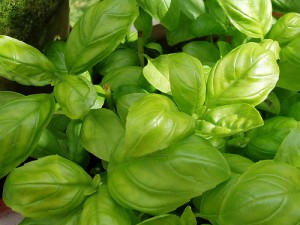

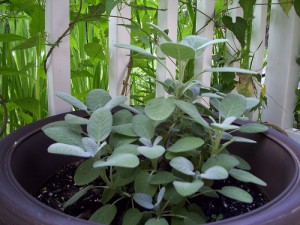



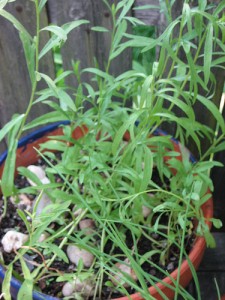

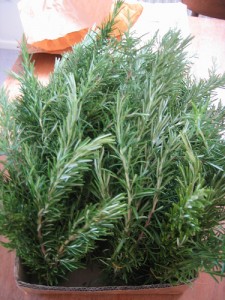

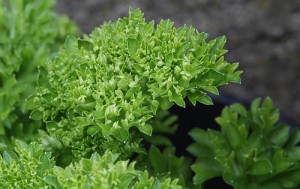

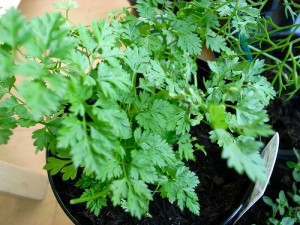
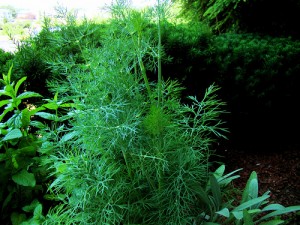




Комментариев нет:
Отправить комментарий